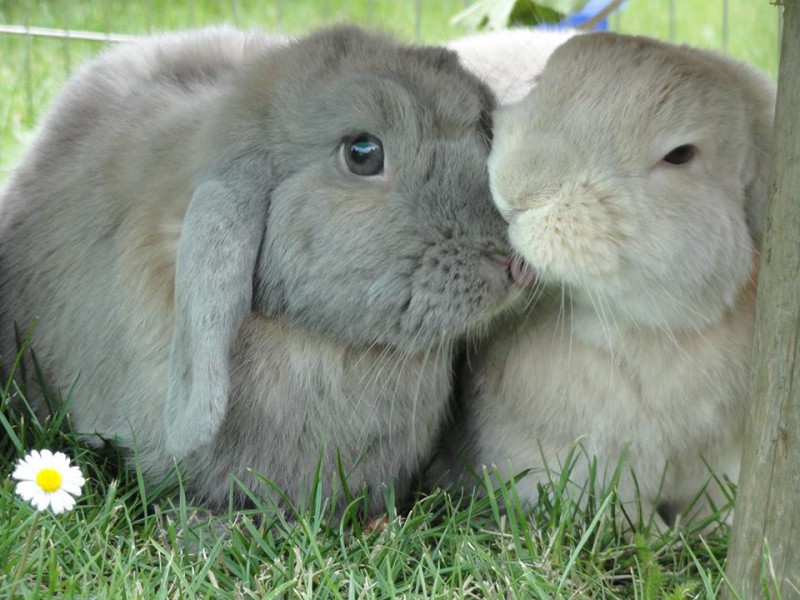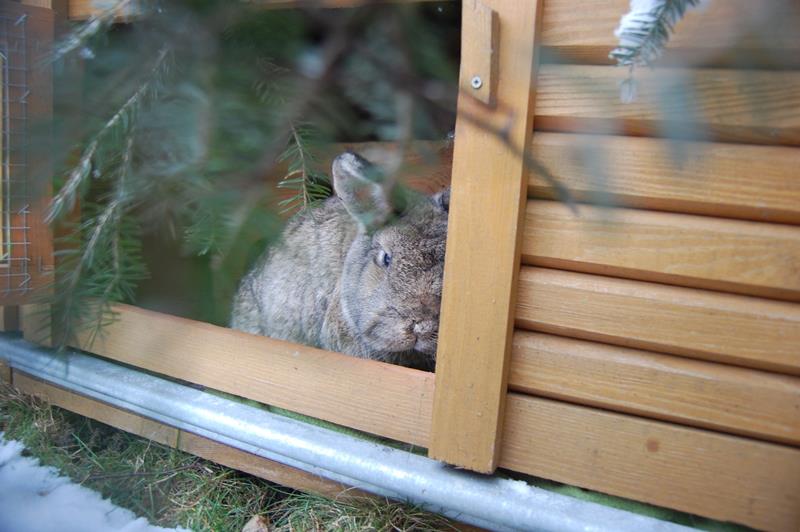Every owner will eventually face the situation where one rabbit passes away, leaving the other one alone. The question then arises whether the remaining rabbit should stay alone, be paired with another, or be rehomed.

Contents
Do Rabbits Grieve?
Most rabbits do not show their grief as intensely as one might initially think. They may become calmer, move less, eat more or less than before, and show less interest in their surroundings. Others may exhibit minimal behavioral changes, with the owner noticing no significant difference. However, even these seemingly unaffected rabbits experience internal grief. Many older rabbits die of sorrow or become ill. E. cuniculi infection, often observed in the weeks following the death of a beloved companion, is a common outcome. This disease is exacerbated by stress, and while outwardly the rabbits may appear normal, internal suffering triggers the onset of the illness. Other health issues are also promoted by this internal stress. Some rabbits, caught in the cycle of grief and internal stress, may succumb to various illnesses, often leading to death.
No rabbit should grow old alone; there is always a solution to keeping them in appropriate company, even if one decides to cease rabbit-keeping altogether.
Can the Companion Rabbit be Left Alone?

I often hear suggestions that keeping rabbits should cease after one of the pair passes away. The last rabbit is then left alone until it dies. These rabbits are often elderly, but sometimes still ‚in their prime,‘ and are kept alone, waiting for their death.
For a social animal, such an approach by the owner means enduring a few horrendous final months or years. The rabbit suffers invisibly under the owner’s decision. There is always a solution to keep social animals in company and provide them with a dignified life until death. Learn more about how to implement this below. No rabbit should be left alone just because the owner decides to stop keeping rabbits in the long run.
Ideally, a new rabbit should be introduced immediately. However, if it takes some time to find a new companion, at least during the first two weeks after the death, another partner should be introduced. Longer waiting periods can be challenging for some rabbits, especially if they extend beyond a month. Make sure that the rabbit eats well and remains active during the waiting period. To distract it from grief, consider redesigning the enclosure, providing ample space, and offering various activities (such as enrichment materials, new furnishings, and more free-roaming time). Human affection often helps tame rabbits; even a stuffed animal can provide comfort until the new companion arrives. If the rabbit becomes tame in its grief, it is a desperate measure and an expression of profound sorrow.
Introducing Sick Rabbits?

The rabbit doesn’t know it will have a companion in four weeks. It feels alone and sad every single day.
Often, we observe that rabbits left alone for more than two weeks experience one illness after another, leading to a continuous delay in introducing a companion. In our experience, these rabbits typically succumb to their conditions. Therefore, it is crucial to introduce companions to sick rabbits promptly!
What to Do Now?
The first decision to make is whether you want to continue keeping rabbits long-term or plan to stop in the foreseeable future.
- If you decide to continue keeping rabbits, it’s a given that you should get at least one more rabbit.
- If you want to stop keeping rabbits, there are various options:
Stop Keeping Rabbits – But Not in Isolation

- Possibility: Rehome the Rabbit Find a good new home for your rabbit where it can age in the company of others. Perhaps you can visit it regularly? However, ensure you inspect the place and talk to the new owners to make sure your rabbit will continue to be kept in a species-appropriate manner.
- Possibility: Find a Foster Home Some rescues or individuals with group housing offer „retirement spaces“ for rabbits, where they can live with the group for a monthly fee, covering veterinary costs. You remain the owner and can continue to visit and make decisions about medical care, etc.
- Possibility: Connect with Other Owners in a Similar Situation You are not the only owner in this situation, and there are many others. Through classifieds and forums, you can often find nearby owners who have a single rabbit „left over.“ Often, you can join forces and let the lonely rabbits live together with one of the owners. Here, it can be flexibly arranged whether the owner can visit regularly, perhaps help with the chores and take care of vet appointments, etc. It can also be discussed how the costs will be handled.
- Possibility: Take in a Temporary Rabbit or „Rabbit for a While“ Some rescues and shelters offer to take in a rabbit as a companion until the last rabbit passes away and then return it. This way, your rabbit doesn’t remain alone and doesn’t have to move. This is a great option for very old rabbits, as they can hardly cope with a move. It is essential to clarify that the rescue has good adoption conditions so that the rabbit can be placed in a good home later. Temporary rabbits can also be kept if you change your mind. In principle, any rescue rabbit from a shelter or organization can be returned at any time, as almost all adoption contracts contain a clause stating that if the owner gives up the rabbit, it must be returned to the rescue.“




















